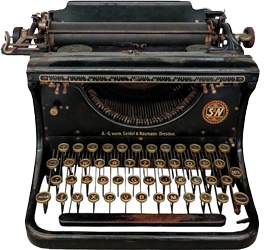March 29 – It seemed fitting to follow a panel of thriller writers with a panel about Writing Villains. The panel members were Bharti Kirchner (moderator), Hilary Davidson, Meg Gardiner, David Housewright, and Kim Moritsugu. Questions focused on the villain as a bad guy or as a sometimes “good” bad guy, how the villain is created and how he/she compliments the protagonist, and the villain’s motivation for committing the crime. Any mistakes are due to faulty notetaking and/or memory on my part.
Hilary
- Her personal experience includes a man trying to kill everyone in her office
- Her upcoming book, One Small Sacrifice, tells the story of a war photographer who suffers from PTSD, his girlfriend and sister have gone missing, and he doesn’t know if he is the villain, written in multiple viewpoints
- Brings her personal experience (see above) into her villain
- A villain has passion and insight and is convinced they are right
- Writes “all shades of gray” for her villains
- Looks at envy in her books
- In this era, people produce a carefully curated version of themselves
- Everyone resents a person who got what they were supposed to get
- She put a guy in her book who she knew in real life and very bad things happened to him
- Made the villain bigger and gave him his own book
Meg
- Her book, Into the Black Nowhere, tells the story of five women who disappeared up and down the I-35 corridor in central Texas and the FBI team brought in to find the killer
- Draws her villain over and over again until he comes into 3-D life
- Have to create people who have a spirit of deviousness, drive, something that motivates them deeply
- Have to make the villain smart and relentless
- Greed, love, revenge are classic motivations
- Three things that lead to murder are babes, bucks, and booze (told to her by a Houston medical examiner, I think)
- Coming up with the motivation is fun
- Examine all the primal human drives, pick something that is really human so we can all see ourselves in it and doing it
- What is the pattern and where might it be going
- Occasionally something will get under her skin and provide an epiphany for a story
- Has had villains that want to be big, so she makes the protagonist bigger
- Get readers concerned about what is happening to the characters
- Sometimes you can just hint at the brutality and the readers will fill it in
David
- His most recent book, First Kill the Lawyers, is a book about morality vs. ethics
- What to do if you’re a lawyer defending a multiple murderer
- The key to writing villains is to understand their humanity
- Villains don’t think they’re bad guys, they believe they all have good reasons for doing something
- Raymond Chandler – give murders back to the people who actually commit murders (slap at cozies)
- What is the villain’s motivation
- This is their life because this is their life
- Writes basic trench-coat PI investigations
- What about the “bad” good guy
- Know what is reasonable and what is not
- To a writer, everything can be used as material
- You never know where you’re going to get an idea
- Write the type of book you would like to read
Kim
- Her book, The Showrunner, is a darkly humorous, Hollywood noir, suspense novel about a power struggle between two women, the situation eventually turns murderous, the book was inspired by the film All about Eve
- Likes villains who are charming and funny
- Her villain is about tensions between older people and younger people
- Beware the bitter crone, beware the fresh-faced acolyte
- No serial killers in her book
- More about the process of moving from starting out slightly irritable to ending by killing someone, the story of how the villain got there, tell the story about how they got there
- Has played up the villain occasionally
